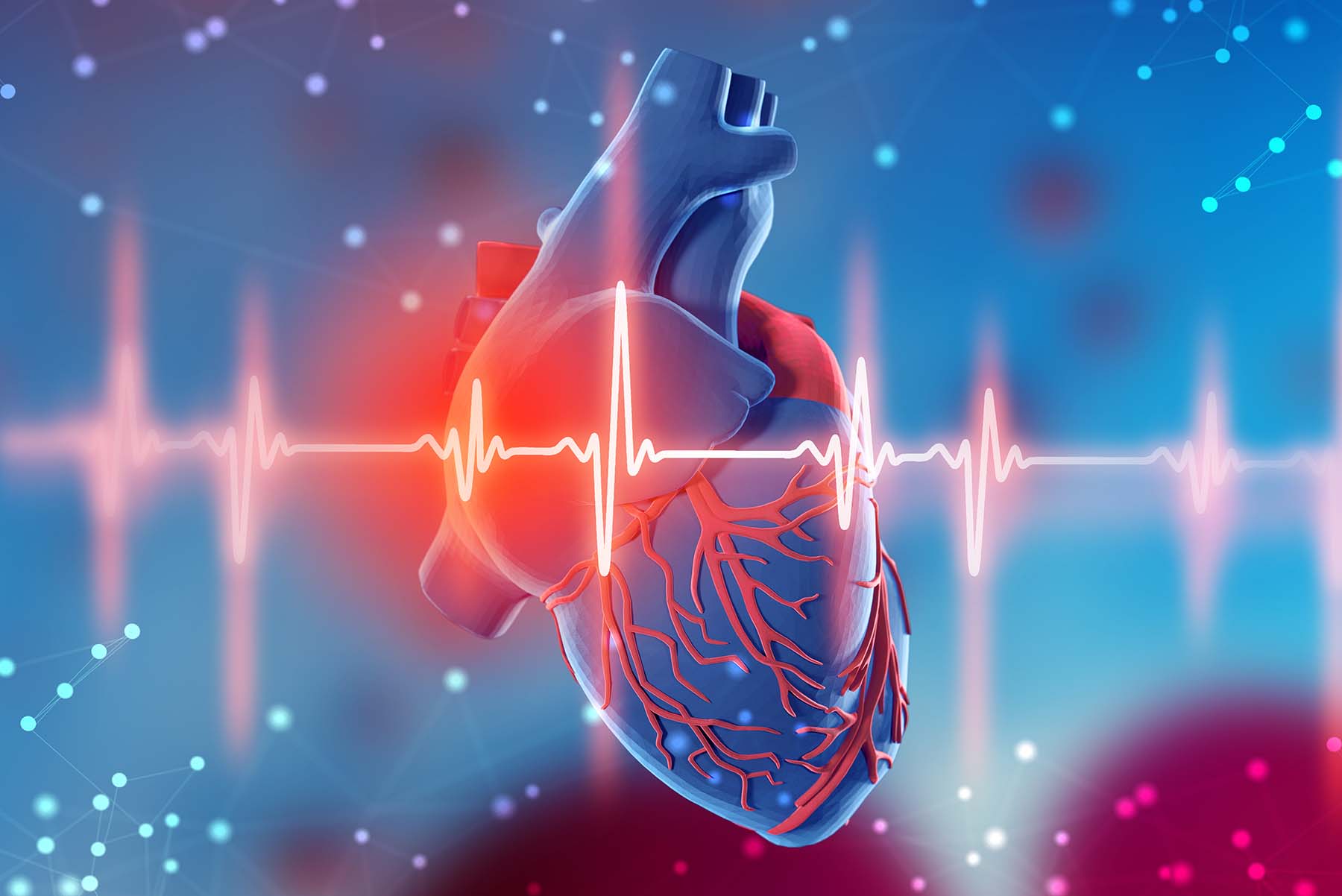Heart Failure: Is it as Bad as it Sounds?

Time was when a diagnosis of heart failure meant a patient was at the end of life, and the medical community was at a loss for treatment. This, however, has changed in the past decade or so.
“It’s not a death sentence anymore,” says Luanda Grazette, M.D., M.P.H., FACC, a cardiologist for the University of Miami Health System. “In the past two decades, we have found that our medical and device therapies are increasingly effective, and our patients go on to live full lives with the proper treatment.”
As the director of Advanced Heart Failure, Heart Failure Recovery, and Therapeutic Innovation, Dr. Grazette oversees the expansion of UHealth’s heart failure program, which includes treating those who require advanced interventions, such as a heart transplant or LVAD (a mechanical pump for patients who have reached end-stage heart failure), as well as patients who are hoping to improve their condition.
As late as the 1990s and early 2000s, she says, “the thinking was that depending on the case, there wasn’t much that we could do beyond relieving symptoms and making patients more comfortable.”
And while that thinking has changed, thanks to medical advances, heart failure remains common and perilous.
About 6.5 million Americans over the age of 20 have heart failure, according to the Heart Failure Society of America, and another 960,000 new heart failure cases are diagnosed annually.
Five years ago, the American Heart Association projected that cases of heart failure would jump a shocking 46% by 2030.
Part of that increase can be attributed to research that has led to improved therapies, allowing patients to live longer with the condition.
“We’ve gotten so good at treating heart disease that people who would’ve died from a heart attack a few decades ago are surviving,” Dr. Grazette says, adding that those survivors also face higher heart failure risk.
But it’s not just long-term survivors of heart disease that account for the increase in cases. Our unhealthy lifestyle — and the graying of the population — also contribute to the rise in cases. Dr. Grazette says that more people are being diagnosed with diabetes and hypertension, and many are at a younger age than previous generations.
“Many people walk around with high blood pressure and don’t know it,” Dr. Grazette says. “Yet we know hypertension is a leading contributor to heart failure.”
As the name suggests, heart failure is a condition in which the heart muscle is too weak or stiff to function correctly. This results in blood backing up and fluid building up in the lungs, which, in turn, causes the signature symptom of the disease — shortness of breath.
Other symptoms of this chronic condition include fatigue, rapid or irregular heartbeat, swelling in the legs, ankles, and feet, rapid weight gain from fluid buildup, and persistent cough.
If a heart attack causes heart failure, a patient may also feel chest pains.
Recognize these symptoms and seek immediate medical help.
This helps physicians treat the condition in a timely manner. With the help of diagnostic medical tests, your doctor can determine not only how well your heart is pumping but also the kind of heart failure you have. (Note: heart failure symptoms are also typical of other heart and lung conditions.)
Treatment depends on the severity and the cause.
It can involve both pharmacological therapy as well as technological tools.
“People placed on effective therapy can have their heart failure controlled for many years,” Dr. Grazette says. “Our goal for every patient is to help them achieve good functional capacity and quality of life.”
The program for heart failure patients at UHealth is comprehensive. It includes a multidisciplinary approach, from interventional treatments such as valve replacement and repair for patients flagged as high-risk to those who might need a heart transplant or the placement of a ventricular assist device (VAD), which serves to pump the blood for one or both heart ventricles.
UHealth was the first program in the area to use BaroStim Neo, which regulates cardiovascular function.
In addition, Dr. Grazette is enthusiastic about CardioMEMs, a system that allows physicians to remotely monitor patients with heart failure by using sensor technology. This, she says, improves care and prevents hospitalizations.
Research also plays a vital part in UHealth’s multi-pronged approach to heart failure.
Dr. Grazette and a team of UHealth interventional cardiologists are collaborating on devices that help heart failure patients live a more normal life.
She’s also working with other researchers on the possibility of new biomarkers — “a biological fingerprint,” as she calls it — that can predict which patients will most likely recover from the condition.
“We are trying to understand why some recover and some don’t, even with the same treatment,” she says.
Studies of cardiac cells, she adds, “have demonstrated that the heart is much more plastic than we originally thought, and what looks like irreversible damage may not be. We now know that certain patients can recover to a new normal with therapy.”
Unfortunately, medical advances are overshadowed by a hard reality: Heart failure cases and deaths are skewing younger for several reasons. In fact, a new study published online in JAMA Cardiology found that heart failure deaths among the 45-and-under set have been climbing since 2012.
This is particularly alarming because those rates have remained stable for years.
What’s more, young Black adults were disproportionately affected, with more than three times the death rate as others at the same age.
This requires further study, she says. Some patients may not seek medical help until the heart muscle is severely damaged. Some may not be recognized initially when they seek medical help because the symptoms of heart failure are common of many conditions.
The incidence of obesity, diabetes, and high blood pressure also has been increasing in younger adults, and all these conditions contribute to poor cardiovascular health. Heart attacks are on the rise in patients between 20-30 years old, with the heart attack rate increasing by 2% yearly in this age group. (Now, 1 in 5 heart attack patients are younger than 40 years of age.)
This is why Dr. Grazette advocates for prevention and disease management.
- Eat healthily and maintain a proper weight, she tells patients.
- Stay physically active and manage stress.
- Don’t smoke.
- Control your diabetes and hypertension if you suffer from these conditions.
“Regardless of the cause of heart failure,” she adds, “you can improve your condition by managing the risk factors you can control.”

Ana Veciana-Suarez, Guest Columnist
Ana is a regular contributor to the University of Miami Health System. She is a renowned journalist and author, who has worked at The Miami Herald, The Miami News, and The Palm Beach Post. Visit her website at anavecianasuarez.com or follow @AnaVeciana on Twitter.
Tags: developing heart failure, Dr. Luanda Grazette, heart care in Miami, heart disease and stroke, pump enough blood, treating heart failure, types of heart failure
